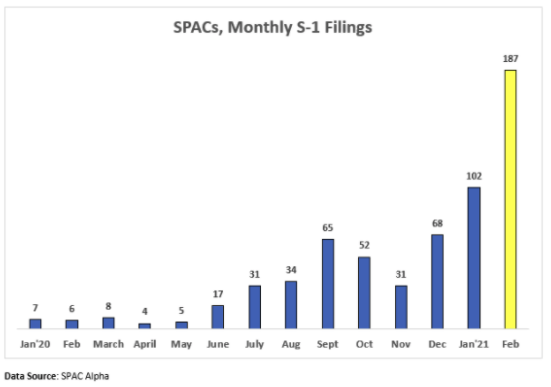
Welcome again to The TechCrunch Alternate, a weekly startups-and-markets publication. It’s broadly primarily based on the daily column that appears on Extra Crunch, however free, and made to your weekend studying. Need it in your inbox each Saturday morning? Enroll here.
Prepared? Let’s speak cash, startups and spicy IPO rumors.
Regardless of some recent market volatility, the valuations that software program firms have usually been in a position to command in latest quarters have been spectacular. On Friday, we took a look into why that was the case, and the place the valuations might be a bit extra bubbly than others. Per a report written by few Battery Ventures buyers, it stands to purpose that the center of the SaaS market might be the place valuation inflation is at its peak.
One thing to bear in mind in case your startup’s progress charge is ticking decrease. However right now, as a substitute of being an unlimited bummer and making you are concerned, I’ve include some traditionally notable knowledge to indicate you ways good trendy software program startups and their bigger brethren have it right now.

In case you aren’t 100% infatuated with tables, let me prevent a while. Within the higher proper we are able to see that SaaS firms right now which can be rising at lower than 10% yearly are buying and selling for a mean of 6.9x their subsequent 12 months’ income.
Again in 2011, SaaS firms that have been rising at 40% or extra have been buying and selling at 6.0x their subsequent 12 month’s income. Local weather change, however for software program valuations.
Yet another be aware from my chat with Battery. Its investor Brandon Gleklen riffed with The Alternate on the definition of ARR and its nuances within the trendy market. As extra SaaS firms swap conventional software-as-a-service pricing for its consumption-based equal, he declined to quibble on definitions of ARR, as a substitute arguing that each one that issues in software program revenues is whether or not they’re being retained and rising over the long run. This brings us to our subsequent subject.
Consumption v. SaaS pricing
I’ve taken a lot of earnings calls in the previous few weeks with public software program firms. One theme that’s come up again and again has been consumption pricing versus extra conventional SaaS pricing. There’s some knowledge exhibiting that consumption-priced software program firms are trading at higher multiples than historically priced software program firms, because of better-than-average retention numbers.
However there may be extra to the story than simply that. Chatting with Fastly CEO Joshua Bixby after his firm’s earnings report, we picked up an attention-grabbing and vital market distinction between the place consumption could also be extra engaging and the place it is probably not. Per Bixby, Fastly is seeing bigger prospects want consumption-based pricing as a result of they’ll afford variability and like to have their payments tied extra intently to income. Smaller prospects, nevertheless, Bixby stated, want SaaS billing as a result of it has rock-solid predictability.
I introduced the argument to Open View Partners Kyle Poyar, a enterprise denizen who has been writing on this topic for TechCrunch in latest weeks. He famous that in some instances the alternative could be true, that variably priced choices can attraction to smaller firms as a result of their builders can typically take a look at the product with out making a big dedication.
So, maybe we’re seeing the software program market favoring SaaS pricing amongst smaller prospects when they’re sure of their want, and selecting consumption pricing after they need to experiment first. And bigger firms, when their spend is tied to equal income modifications, bias towards consumption pricing as properly.
Evolution in SaaS pricing shall be gradual, and by no means full. However people actually are fascinated about it. Appian CEO Matt Calkins has a normal pricing thesis that worth ought to “hover” beneath worth delivered. Requested concerning the consumption-versus-SaaS subject, he was a bit coy, however did be aware that he was not “fully glad” with how pricing is executed right now. He needs pricing that may be a “higher proxy for buyer worth,” although he declined to share far more.
In the event you aren’t fascinated about this dialog and also you run a startup, what’s up with that? Extra to return on this subject, together with notes from an interview with the CEO of BigCommerce, who’s betting on SaaS over the extra consumption-driven Shopify.
Subsequent Insurance coverage, and its altering market
Subsequent Insurance coverage bought one other firm this week. This time it was AP Intego, which is able to convey integration into varied payroll suppliers for the digital-first SMB insurance coverage supplier. Subsequent Insurance coverage must be acquainted as a result of TechCrunch has written about its growth a few times. The corporate doubled its premium run charge to $200 million in 2020, for instance.
The AP Intego deal brings $185.1 million of lively premium to Subsequent Insurance coverage, which signifies that the neo-insurance supplier has grown sharply so far in 2021, even with out counting its natural enlargement. However whereas the Subsequent Insurance coverage deal and the impending Hippo SPAC are neat notes from a scorching non-public sector, insurtech has shed a few of its public-market warmth.
Shares of public neo-insurance firms like Root, Lemonade and MetroMile have lost quite a lot of value in recent weeks. So, the exit panorama for firms like Subsequent and Hippo — yet-private insurtech startups with numerous capital backing their fast premium progress — is altering for the more severe.
Hippo determined it can debut by way of a SPAC. However I doubt that Subsequent Insurance coverage will pursue a fast ramp to the general public markets till issues easy out. Not that it must go public rapidly; it raised 1 / 4 billion again in September of final 12 months.
Varied and Sundry
What else? Sisense, a $100 million ARR club member, hired a new CFO. So we count on them to go public inside the following 4 or 5 quarters.
And the next chart, which is via Deena Shakir of Lux Capital, by way of Nasdaq, by way of SPAC Alpha:







